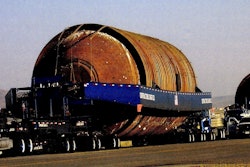
Just one example of the disconnect (notwithstanding the one I wrote about last week) was noted by owner-operators Linda Caffee and Henry Albert of the Trucking Solutions Group after reading an explanation of the occasional inability to enforce the limitation of one restart every 168 hours, or seven days, given the requirement of drivers to only keep eight days’ worth of logs with them on the truck. Language there, combined with radio reports, caused Albert to question whether the restart was truly limited to “once every 168 hours” or whether, rather, the intent was to require 168 hours to pass between the end of the first restart and the beginning of the next allowable one.
For instance, under the new limitations, if a driver starts a 34-hour restart period at 11 p.m. on a Friday, would he be able to begin another one as early as 11 p.m. on Friday the following week? Or would he have to wait until 9 a.m. Sunday morning?
The answer’s clearly spelled out in the rule.
After June 30, 2013, a driver may not take an off-duty period allowed by paragraph (c) of this section to restart the calculation of 60 hours in 7 consecutive days or 70 hours in 8 consecutive days until 168 or more consecutive hours have passed since the beginning of the last such off duty period. When a driver takes more than one off-duty period of 34 or more consecutive hours within a period of 168 consecutive hours, he or she must indicate in the Remarks section of the record of duty status which such off- duty period is being used to restart the calculation of 60 hours in 7 consecutive days or 70 hours in 8 consecutive days.

Search any bit of that language in the Dec. 27 Federal Register document and you’ll find it.
However, such clear answers to other questions are as yet forthcoming, says former owner-operator Wilson, in the safety consulting business today. “I’m just waiting to get some definitive confirmation on what is right or wrong because I can’t even go out and teach this rule right now,” he says.
Questions he has have to do with changes to the definition of on-duty time. “If it does not include any time resting in a parked truck, if I write on my log, ‘parked,’ does that stretch my 14-hour clock out? Do I pick up all this time because I’m resting?”
Wilson says answers are unspecified in the document — my guess is that the rigidity of the 14-hour window precludes the ability to stretch it out, that that’s the intent, anyway. But it’s an interesting question, and highlights the need for precision in regulatory texts. What do you think? Have you found other contradictory statements in the rule’s explanation? Other problems?














